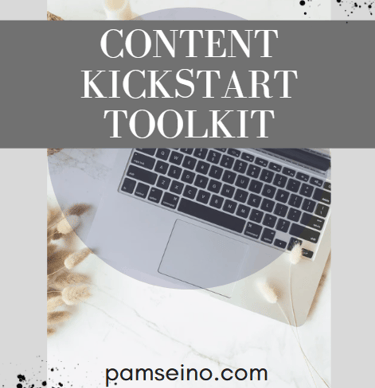Download your FREE Magnetic Magic guide!
Effective Marketing Strategies on a Budget
You don’t need a big budget to make a big impact.
ONLINE MARKETING
10/8/20257 min read


News Flash: You don’t need a big budget to make a big impact. With creativity and consistency, even small businesses can market effectively. Here are strategies proven to work without draining your wallet.
1) Repurpose Content (Without Reinventing the Wheel)
Why it matters
Producing content from scratch (videos, blog posts, graphics) is time- and resource-intensive. But one “pillar” piece of content can feed multiple formats and channels, increasing your ROI.
How to do it well
Start with a “pillar” or long-form content piece
For example, a blog post, an in-depth guide, or a podcast episode. That becomes your primary asset.Derive multiple formats
Short blog posts or listicle spin-offs
Infographics or data visualizations
Social media graphics or quote cards
Short-form video snippets (e.g. for Reels, TikTok, YouTube Shorts)
Podcast or audio versions
Slides or PDFs you can use as downloadable lead magnets
Tailor to platform
Each platform has its norms (length, tone, visuals). E.g. an Instagram Reel should be punchy and visual; a blog post can go deeper.Maintain consistency
Track which formats perform best, refine, and iterate month to month.Repurpose evergreen content
If a piece was strong and timeless, recycle or refresh it occasionally (update info, new examples) rather than always creating new.
2) Master Organic Social Media
“Engage instead of broadcast” — that’s sound advice, but how do you turn it into action?
Tactics & Tips
Meaningful engagement
Reply to comments, ask questions, run polls or surveys, DM people who mention or tag you.Storytelling & behind-the-scenes
Share the origin story of your business, day-in-life, challenges, or how you made something. This humanizes your brand.User value over selling
Share tips, micro-lessons, useful resources, not just your product/service. The ratio of “value content” to “promotional content” should heavily favor value.Hashtag research & strategic use
Use niche hashtags (less competition) rather than only very broad ones. Try layered tags: broad + niche + branded.Consistent posting schedule + batching
Use tools (Buffer, Later, Hootsuite) to schedule ahead. Batch content creation on low-pressure days.Use platform features fully
On Instagram, use Reels, Stories, Guides, Live videos. On LinkedIn, use articles, posts, document uploads. Each new format gives algorithmic “boosts.”Cross-pollinate content
Let your IG followers know about your blog posts; tweet about your latest email series, etc.
3) Build and Nurture Your Email List
Email remains one of the highest-ROI marketing channels; a typical ROI is $36 for every $1 spent.
More depth & strategies
Strong lead magnets / opt-ins
Templates, checklists, cheat sheets
Mini e-courses or email challenges
Free tools or calculators
Exclusive content (PDFs, insider tips)
Segmentation & personalization
Don’t treat all subscribers as one group. Segment by interest, behavior, purchase history, etc. Then tailor subject lines and content.Drip / welcome sequence
A multi-email sequence when someone signs up: introduction, value content, social proof, light asks to engage or buy.Consistent cadence without spamming
Find a sustainable schedule (e.g. weekly, biweekly). Your list prefers regular valuable content over occasional blasts.Re-engagement campaigns
For dormant subscribers, send reconnect emails (“We miss you,” “Are you still here?”) or surveys.Advance previews / exclusives
Let your email list get “first dibs” on new products, content, discounts — gives them extra value.
4) Partner Up (Collaboration & Cross-Promotion)
Collaborations allow you to tap into new audiences with less cost.
Ideas & execution tips
Complementary businesses
Not direct competitors, but businesses whose audience overlaps (e.g. a yoga studio and a healthy snack provider, or a wedding photographer and a florist).Guest posting / content swaps
Write a blog post for your partner’s site (with attribution) in exchange for them writing one for yours.Bundle or co-offer
Create a joint promotion or bundle that includes both your products/services.Webinars or virtual events together
Co-host a workshop or training; each brings audience.Giveaways / contests
Partner brands each contribute prizes; each promotes the giveaway to their audience.Affiliate / referral partnerships
Offer your partner a referral commission for sales you receive via them.Interviews / podcast swaps
Feature each other in interviews, podcasts, or live sessions.
5) Tap Into User-Generated Content (UGC)
UGC is powerful because peer content tends to be more trusted than brand-produced.
Practical ways to leverage it
Encourage customers to share
Ask them to post photos, reviews, stories using your product, and tag your brand or use a hashtag.Incentivize
Offer small rewards or spotlight features for people whose content you share.Create a branded hashtag
Make a nameable, easy-to-remember hashtag for users to utilize.Share UGC on your channels
Re-post customers’ photos in your feed or stories (always with credit). Use as testimonials.Embed UGC in marketing materials
Use customer photos or quotes on your website, emails, or product pages.Campaigns or challenges
Launch a community challenge (e.g. before/after, transformations, “my setup”) to drive participation.
6) Use Free or Low-Cost SEO Tools & Tactics
Search Engine Optimization is a long-term channel; it doesn’t require huge spending, just consistency and strategy.
Deeper practical steps
Keyword research tools (free / freemium)
Google Keyword Planner
Ubersuggest
AnswerThePublic
Moz’s free keyword tool / SpyFu (freemium)
On-page optimization
Use keywords in titles, headings, meta descriptions, alt text, URL slugs
Keep content readable and well-structured
Use internal linking (link to other pages on your own site)
Optimize for long-tail keywords
They often have less competition and can drive more qualified traffic.Content clusters / pillar pages
Create a high-level topic (“pillar”) and then cluster supporting articles that link to it. That helps authority and internal linking.Optimize page speed / technical SEO
Compress images, use caching, minimize code, mobile-friendly design, structured data/schema.Backlink building (low-cost)
Guest posting
Partner collaborations
“Skyscraper technique”: find content that has many backlinks, create something better, reach out to link sources
Resource pages or directories in your niche
Broken link outreach (finding broken links on sites and suggesting your content as a replacement)
Local SEO (if applicable)
Google Business Profile / Maps listing
Local directories
Local citations and reviews
Local keywords (“city + service”)
Measure & monitor
Set up Google Analytics, Google Search Console, and track things like organic traffic, click-through rates, rankings.
7) Leverage Communities & Niche Groups
Be in the places your ideal customers hang out — but do so thoughtfully.
More nuanced approaches
Facebook groups, LinkedIn groups, Reddit, Slack communities
Join with the goal of providing value first — answering questions, giving advice — not just promoting yourself.Host or moderate your own group
Position yourself as a leader or hub in your niche; that builds authority.Q&A sites / forums
Sites like Quora, StackExchange, or niche forums where your audience asks questions. Provide helpful answers (with subtle links back to your content where relevant).Comment on relevant blogs / podcasts
Leave thoughtful comments on blogs or podcasts in your niche. It builds visibility and sometimes can lead people back to you.Local meetups or virtual meetups
Even in small towns or niche fields, joining or hosting meetups (in person or virtual) amplifies word-of-mouth.Offer free help or audits
In a community, volunteer to do small tasks (audit someone’s website, review something for free). People tend to reciprocate.Be consistent, not salesy
Over time, people will see your name, your voice, and your brand — so “selling” becomes more natural.
Bonus Strategies to Add (Still Low or No Budget)
Here are a few marketing tactics not explicitly covered in the article, but which complement those strategies or extend them:
8) Micro-influencer Collaborations
Even with modest budgets, you can partner with micro-influencers (small but engaged followings) in your niche. Often they accept product trade or low fees. Their endorsement can drive high engagement and authenticity.
9) Referral Programs & Word-of-Mouth
Set up a system where your existing customers or audience can refer others in exchange for perks (discounts, freebies, credits, exclusive content). Word-of-mouth is often one of the most cost-effective growth drivers.
10) Content Upgrades
On your blog posts, offer “upgrades” (bonus downloads, worksheets) in exchange for email signups. This helps boost conversions of website traffic into leads.
11) Create Evergreen Free Tools
If feasible, build a lightweight free tool, calculator, quiz, or checklist that is so useful people will share it. It becomes a lead magnet and link-worthy asset.
12) “Skyscraper Content + Outreach”
Find popular content in your niche, create something better, then reach out to those who linked to the original. This helps with backlinks and traffic without paid ads.
13) Low-Cost Paid Ads with Tight Targeting (Optional)
If you can spare a small budget (e.g. $50–100/month), run micro-tests with highly targeted segments (Facebook, Instagram, Google) to see what works. Limit spend, test, scale what works.
Implementation Plan & Metrics
To make this practical, here’s how you might roll it out:
Month 1: Pick 2–3 strategies to focus on (e.g. content repurposing, email list, community engagement). Track: Content published, grow email list, engagement rates
Month 2: Add a partner collaboration or UGC push
Track: Referral traffic, UGC submissions, new leads
Month 3: Invest in SEO & backlink outreach, test small paid campaigns
Track: Organic traffic growth, rankings, cost per lead
Ongoing: Monitor, iterate, drop what doesn’t work, scale what does
Track: ROI per channel, retention, CAC, lifetime value
Key metrics you’ll want to monitor:
Website traffic (overall and per source)
Conversion rates (visitors → email subscribers; email → sale)
Engagement rates (comments, shares, replies)
Customer acquisition cost (CAC) by channel
Return on investment or return on effort
Retention and referrals
Example Case Study (Hypothetical)
Let’s say “HealthyHome Meals”, a small business that delivers ready-to-cook healthy meals in a mid-sized city, wants to market smartly.
They write a pillar blog post: “Top 10 Easy Healthy Meals for Busy Professionals.”
They repurpose it into:
A downloadable “Meal Plan + Grocery Checklist” (lead magnet)
Short Instagram Reels showing one recipe step
Pinterest pins with the full meal ideas
Email sequence: welcome → tips → nudges to try their meals
They partner with a local gym: offer a joint giveaway (free meal + one gym session), cross-promote to members.
Ask customers to post photos of their meals (before cooking) on Instagram with hashtag #HealthyHomeAtHome; feature best submissions.
Use Ubersuggest / Google Keyword Planner to find “healthy meals delivery [city]” and incorporate into their blog and service pages.
Join local Facebook groups about fitness, healthy living, recipes — answer questions, share tips (without hard selling).
Over 3 months, they might see organic traffic increase, email leads increase, and a few sales via the collaboration and UGC push — all without spending thousands on ads.
Conclusion
Effective marketing on a budget is all about creativity, consistency, and connection — not big spending. By repurposing content, engaging authentically on social media, growing your email list with valuable lead magnets, collaborating with complementary brands, and leveraging user-generated content, you can expand your reach organically. Use free or low-cost SEO tools to boost visibility, join communities where your audience already spends time, and automate simple tasks with tools like Canva, MailerLite, and Buffer. For deeper guidance, check out my book From Print to Profit: The Entrepreneur's Guide to a Thriving Digital Products Business to learn how to build and market your own digital products affordably. Also, check out my favorite marketing and creation tools like Canva Pro, Ubersuggest, and Systeme.io to help you grow smarter, not pricier.
Need help creating unique, engaging content?
Check out my FREE Content Kickstart Toolkit! Actionable, useful tips on content creation!


